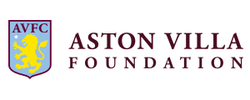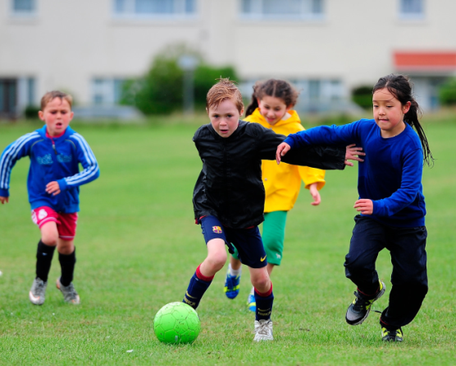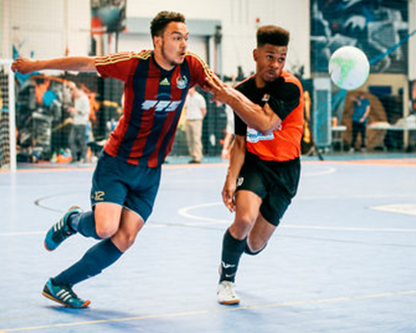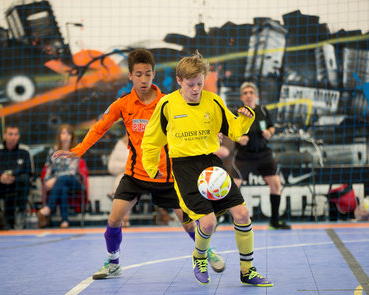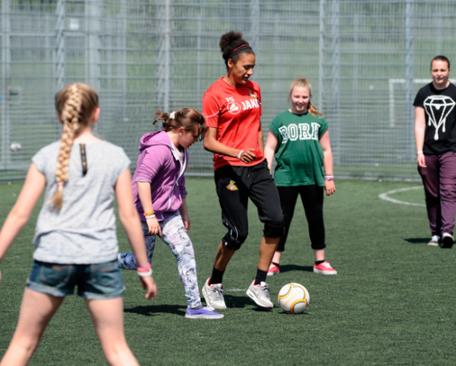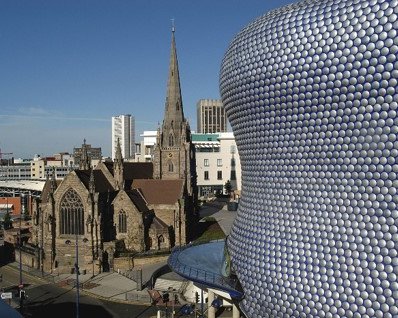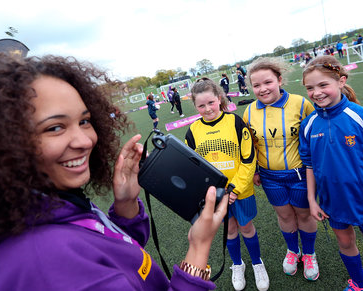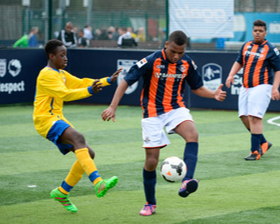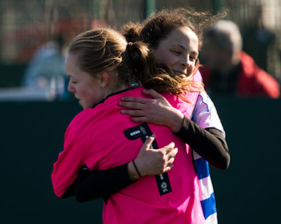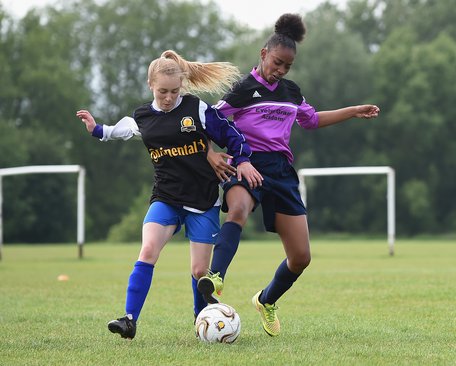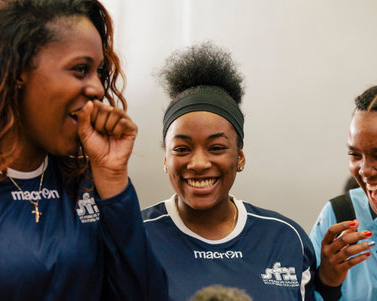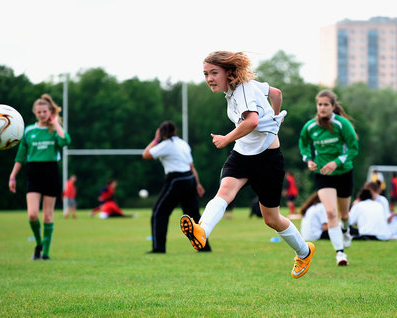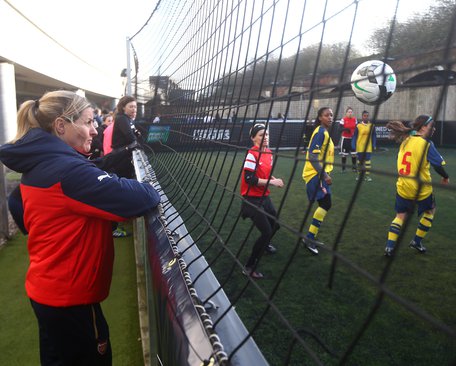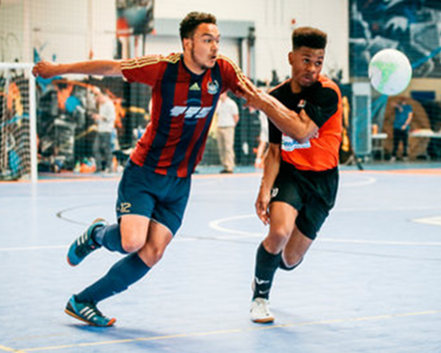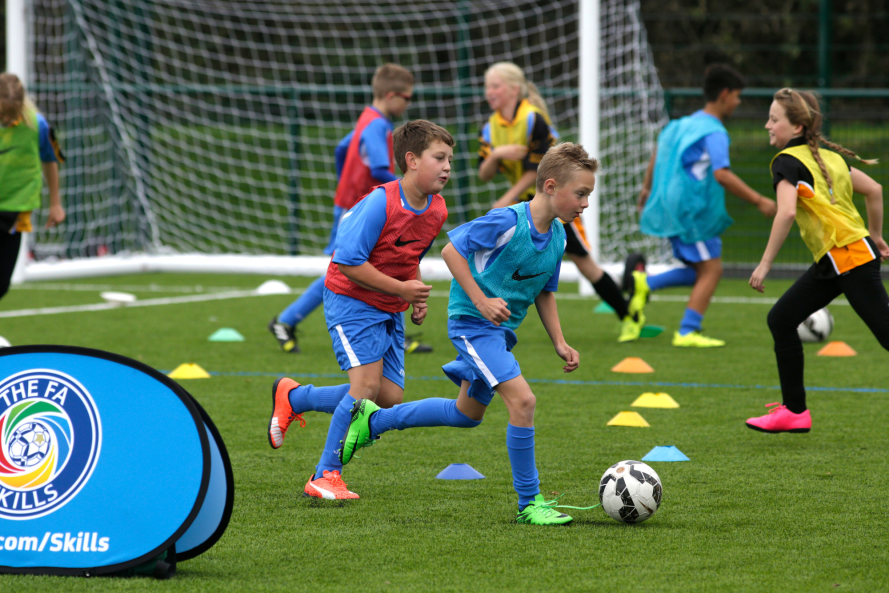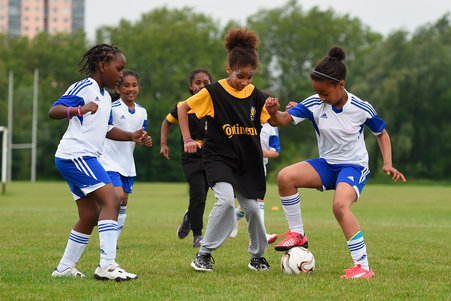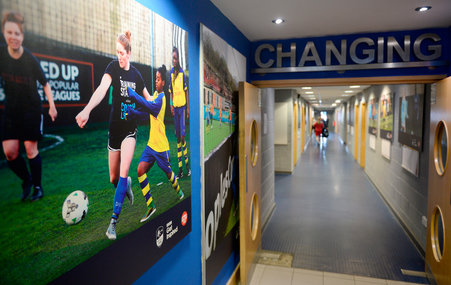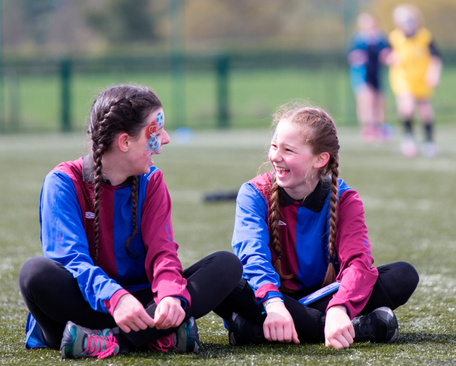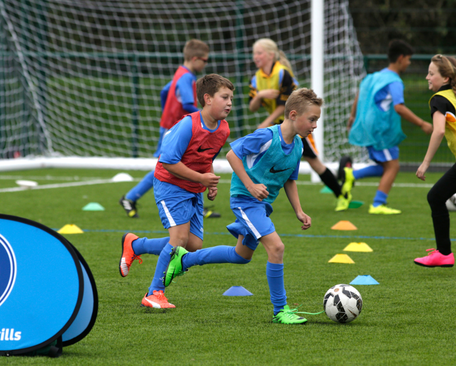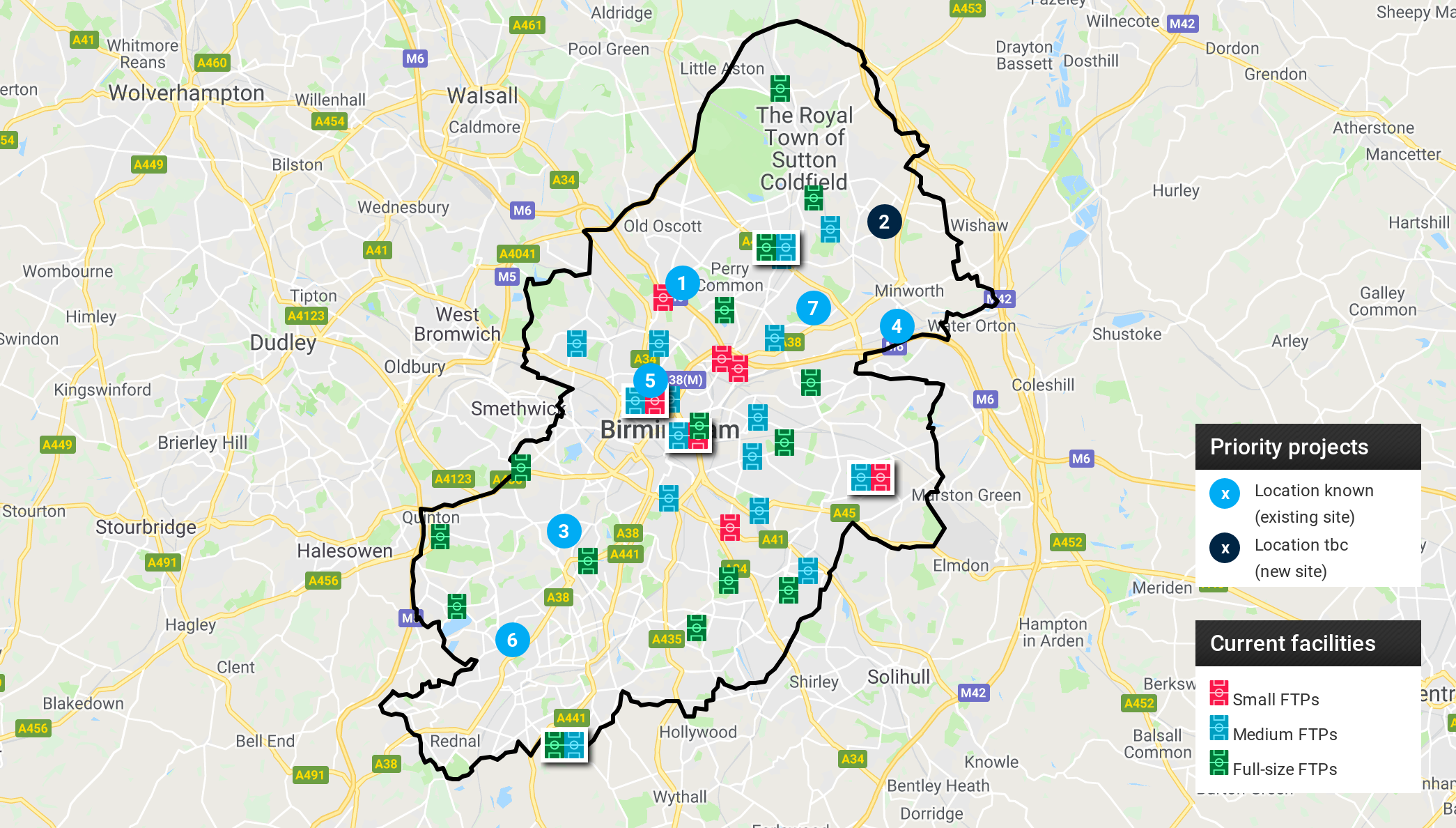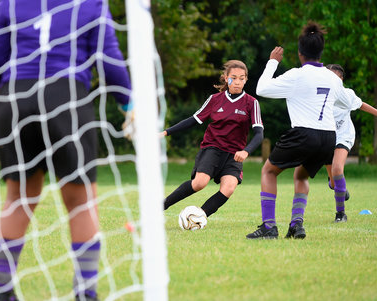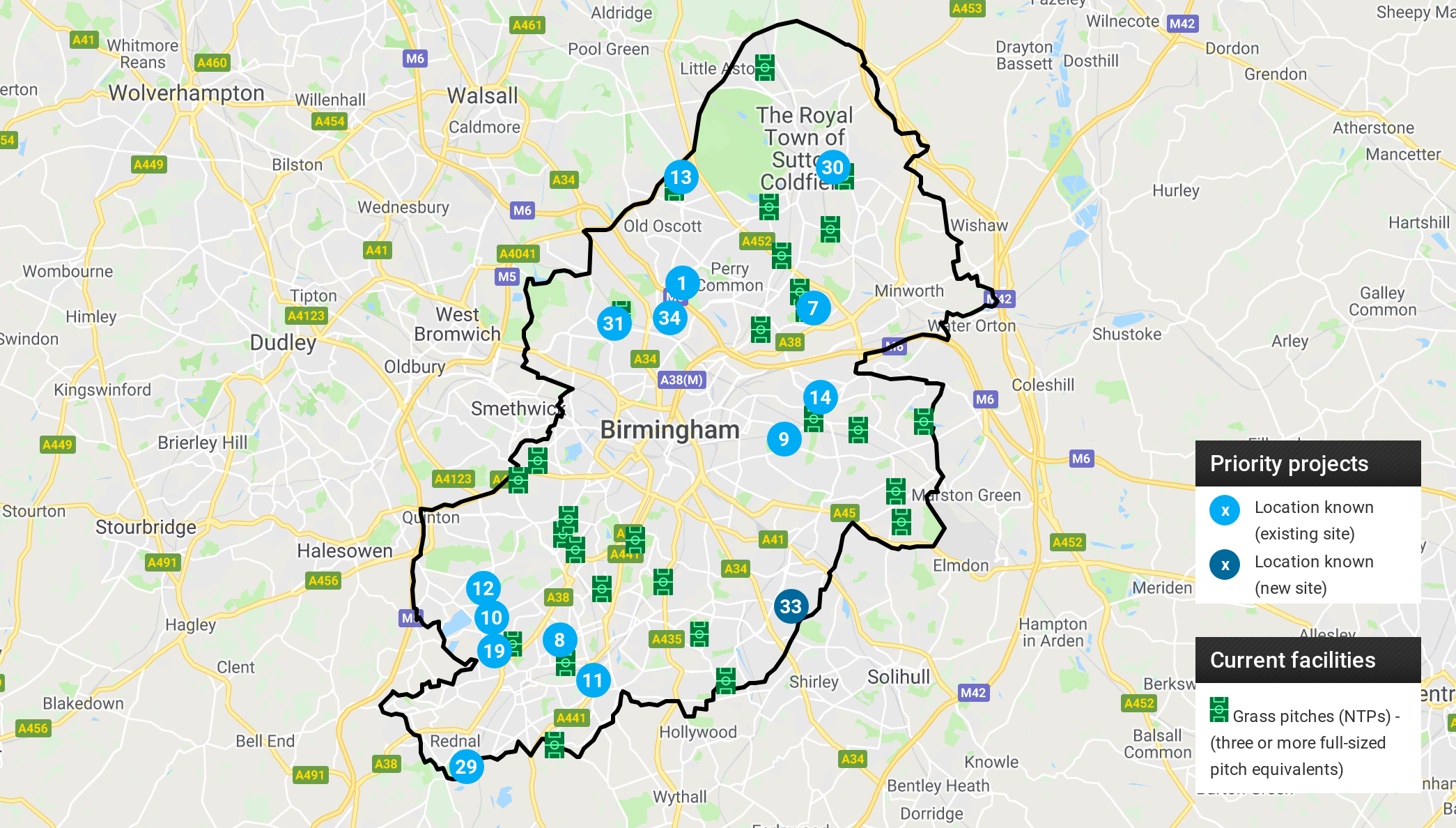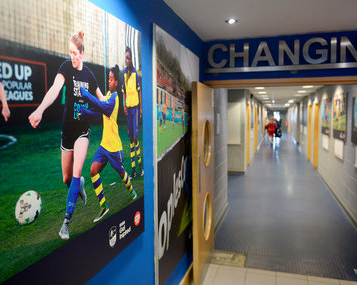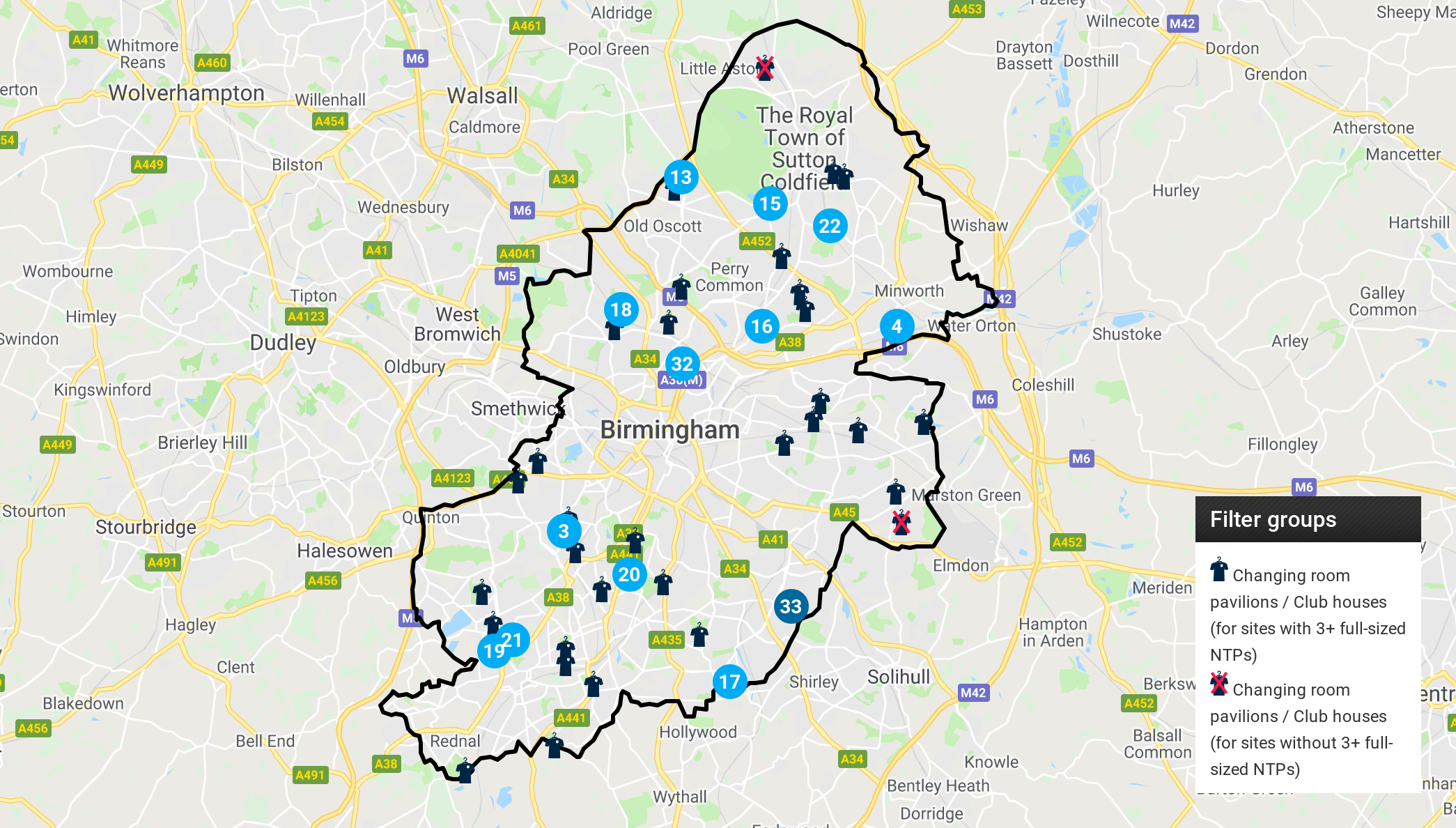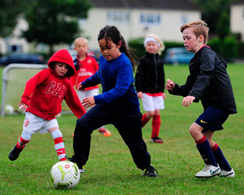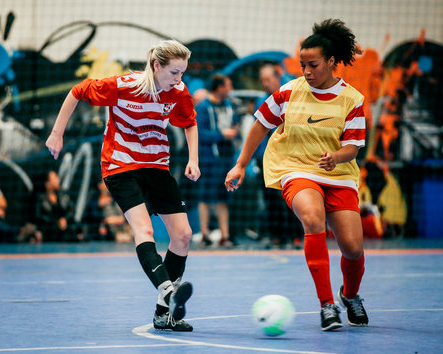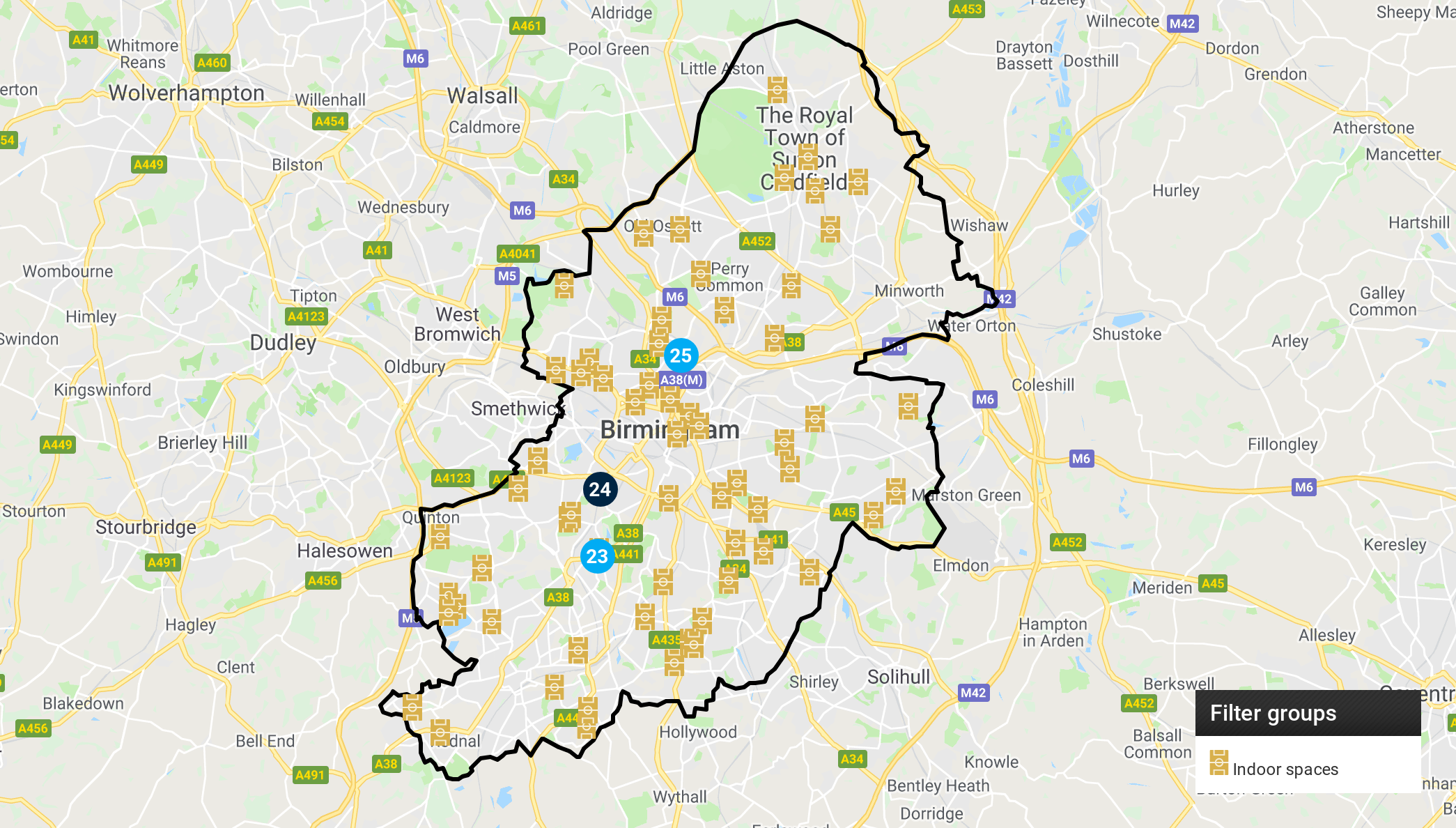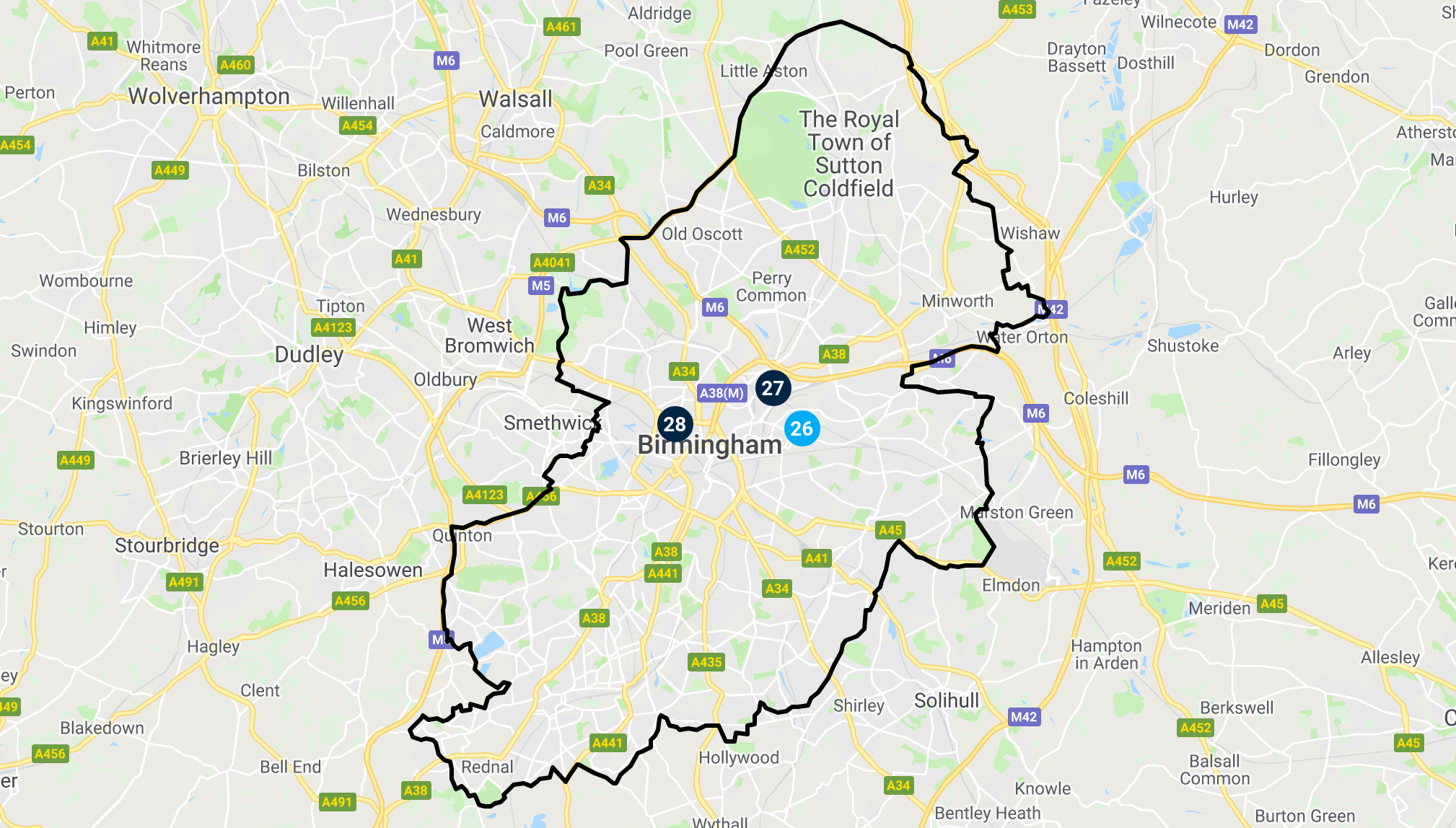Fifteen priority projects for potential investment have been identified, all but two of which (Merrits Brook and Broomhall Playing Fields) have three or more full-size pitch equivalents of standard quality.
Pitch quality rating was evidenced by PPS data and qualified by local partners. Due to the significant number of grass pitch sites in Birmingham local partners did not select all sites and prioritised only 15, containing 61 full-size pitch equivalents. The prioritisation was informed by local partners with the rationale of selecting sites that had the most pitches and that were most well utilised.
7 - Hollyfields Sports and Social Club - natural grass pitch improvements
- Existing football facilities: standard quality grass football pitches x4
- Current users: affiliated teams x8
- Rationale: participation growth in: junior football, senior football.
8 - Rowheath Pavilion - natural grass pitch improvements
- Existing football facilities: standard quality grass football pitches x4
- Current users: affiliated teams x33, including key clubs Bournville (12 teams) and Crusaders/Crusaders Minors (nine teams)
- Rationale: participation growth in: junior football, senior football, women & girls football.
9 - Saltley Wellbeing Centre - natural grass pitch improvements
- Existing football facilities: full size 3G FTP, standard quality grass football pitches x4
- Current users: 22 affiliated teams
- Rationale: participation growth in: junior football, senior football.
10 - Shenley Academy - natural grass pitch improvements
- Existing football facilities: standard quality grass football pitches x6
- Current users: none (Academy exploring increased community use)
- Rationale: participation growth in: junior football, senior football, women and girls football
11 - Kings Norton Playing Fields - natural grass pitch improvements
- Existing football facilities: standard quality grass football pitches x3
- Current users: Bournville Warriors x15 teams
- Rationale: participation growth in: junior football, women and girls football.
12 - Senneleys Park - natural grass pitch improvements
- Existing football facilities: standard quality grass football pitches x5
- Current users: none
- Rationale: participation growth in: junior football, senior football, women and girls football.
13 - King Georges Field - natural grass pitch improvements
- Existing football facilities: standard quality grass football pitches x3
- Current users: St Georges FC x3 teams
- Rationale: participation growth in: junior football, women and girls football
14 - Brockhurst Road Playing Fields - natural grass pitch improvements
- Existing football facilities: standard quality grass football pitches x3
- Current users: Sporting x8 teams, Sporting Brockhurst FC.
- Rationale: participation growth in: junior football, senior football, women and girls football.
19 - Merritt's Brook - natural grass pitch improvements
- Existing football facilities: grass football pitches x2
- Potential users: Bartley Reds, local primary schools network
- Rationale: participation growth in: junior football, women and girls football.
29 - Cofton Park - natural grass pitch improvements
- Existing football facilities: standard quality grass football pitches x3
- Current users: Kings Norton Kickers x5, Thurlestone.
- Rationale: participation growth in: junior football, senior football.
30 - Rectory Park - natural grass pitch improvements
- Existing football facilities: standard quality grass football pitches x3
- Current users: 25 affiliated teams, including Sutton United Juniors x10 and Sutton United Girls x5.
- Rationale: participation growth in: junior football, senior football, women and girls football.
31 - Wood Lane Playing Fields - natural grass pitch improvements
- Existing football facilities: standard quality grass football pitches x4
- Current users: Handsworth GSOB x4 teams, Romilly Rovers, Streetly St George.
- Rationale: participation growth in: junior football, senior football.
33 - Broomhall Playing Fields - natural grass pitch improvements
- Existing football facilities: none (previously had football pitches x2 to be reinstated)
- Potential users: Archbishop Isley Catholic School, Solihull Moors FC.
- Rationale: participation growth in: junior football,women and girls football, disability football, lower socio-economic groups, BAME participation
1 - The Pavilion (Birmingham City University) - natural grass pitch improvements
- Existing football facilities: full sized sand filled pitch, standard quality grass football pitches x11
- Current users: 68 affiliated teams, including Birmingham City University x10 teams, Great Barr Harriers x12 teams and North Birmingham Celtic x13 teams.
- Rationale: participation growth in: junior football, senior football, women and girls football
34 - Holford Drive Community Sports Hub - natural grass pitch improvements
- Existing football facilities: standard quality grass football pitches x4
- Current users: affiliated teams x8
- Rationale: participation growth in: junior football, senior football.
Further to improvements to existing pitches, there is potential to reinstate playing field sites at Green Lane, Wishaw Lane and Spring Lane subject to asset transfer.
The Council is undertaking a broad programme of asset transfer which includes a number of playing field sites to be externalised to local clubs and organisations. This is likely to generate the need for support with access to maintenance equipment and storage as well as education around pitch maintenance and programmes of work. The following sites could benefit from additional onsite maintenance and storage equipment:
- Braemar Road Playing Fields
- Jaffray Playing Fields
- Green Lane (subject to asset transfer)
- Brockhurst Road Playing Fields (subject to asset transfer)
A number of unattached school playing fields across the City will be taken on by schools and clubs for joint use. With school budgets and funding for maintenance likely to be limited, resident clubs may need to undertake additional works and may be required to support with maintenance in the form of equipment and capacity building of volunteers. These sites are marketed by the Council on a commercial leasehold rather than asset transfer basis. The following sites either previously provided football pitches or have the potential to provide football pitches in the future:
- Gospel Lane
- Holloway Head (new football pitches recently reinstated)
- Pebble Mill
- Stetchford Road Playing Fields
- Glenmead Road
- Henry Road
- Leaford Road
- Spring Lane Playing Fields
Where non-football organisations take on the management of facilities with existing football provision, there will be a need to capacity build and support them to be able to sustain and maintain pitches as required.
Sported is a leading Sport for Development Charity and at present works with 27 clubs and organisations in the City with regards to support and governance. It is well placed to assist those looking to take on asset transfer.



